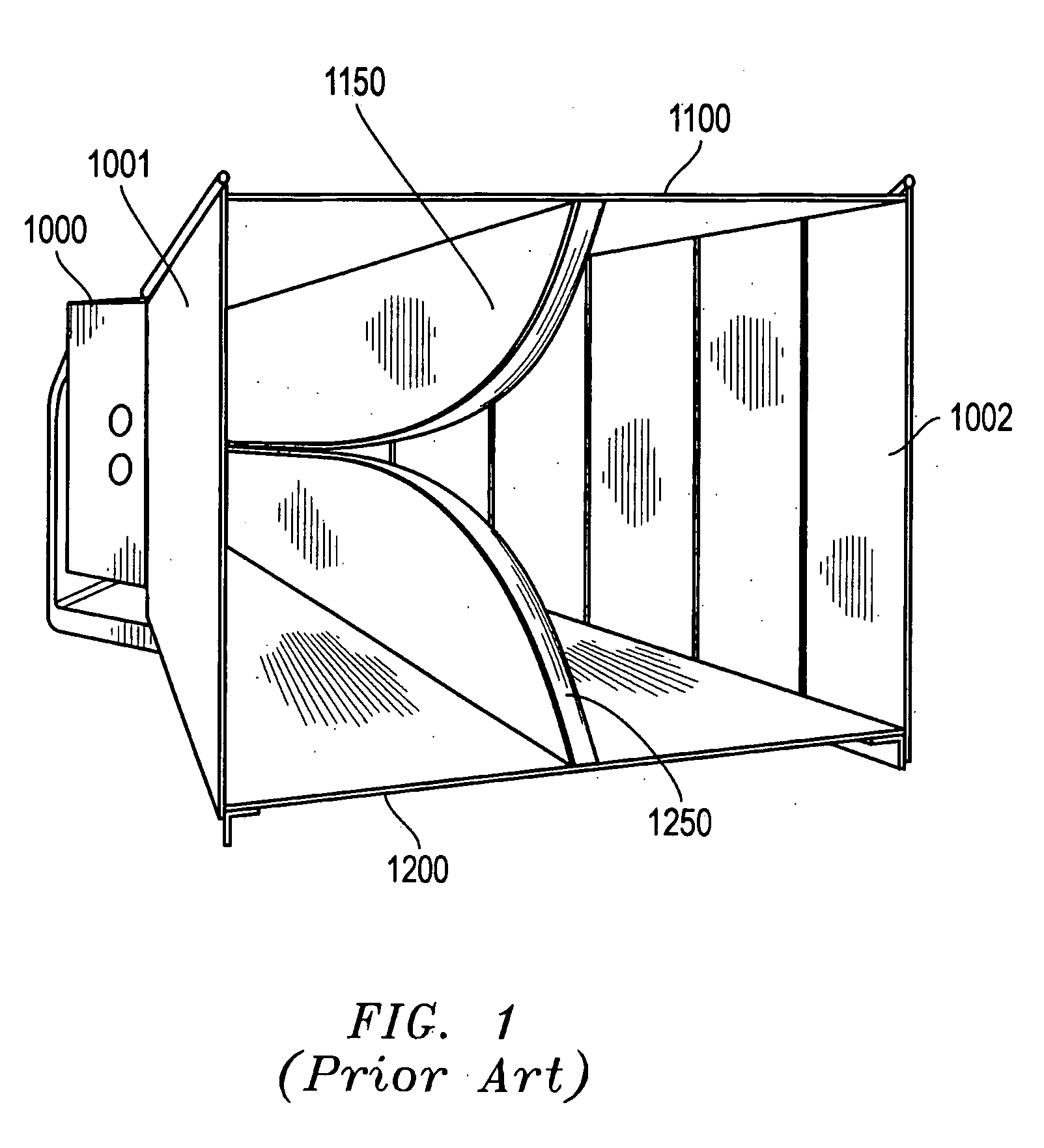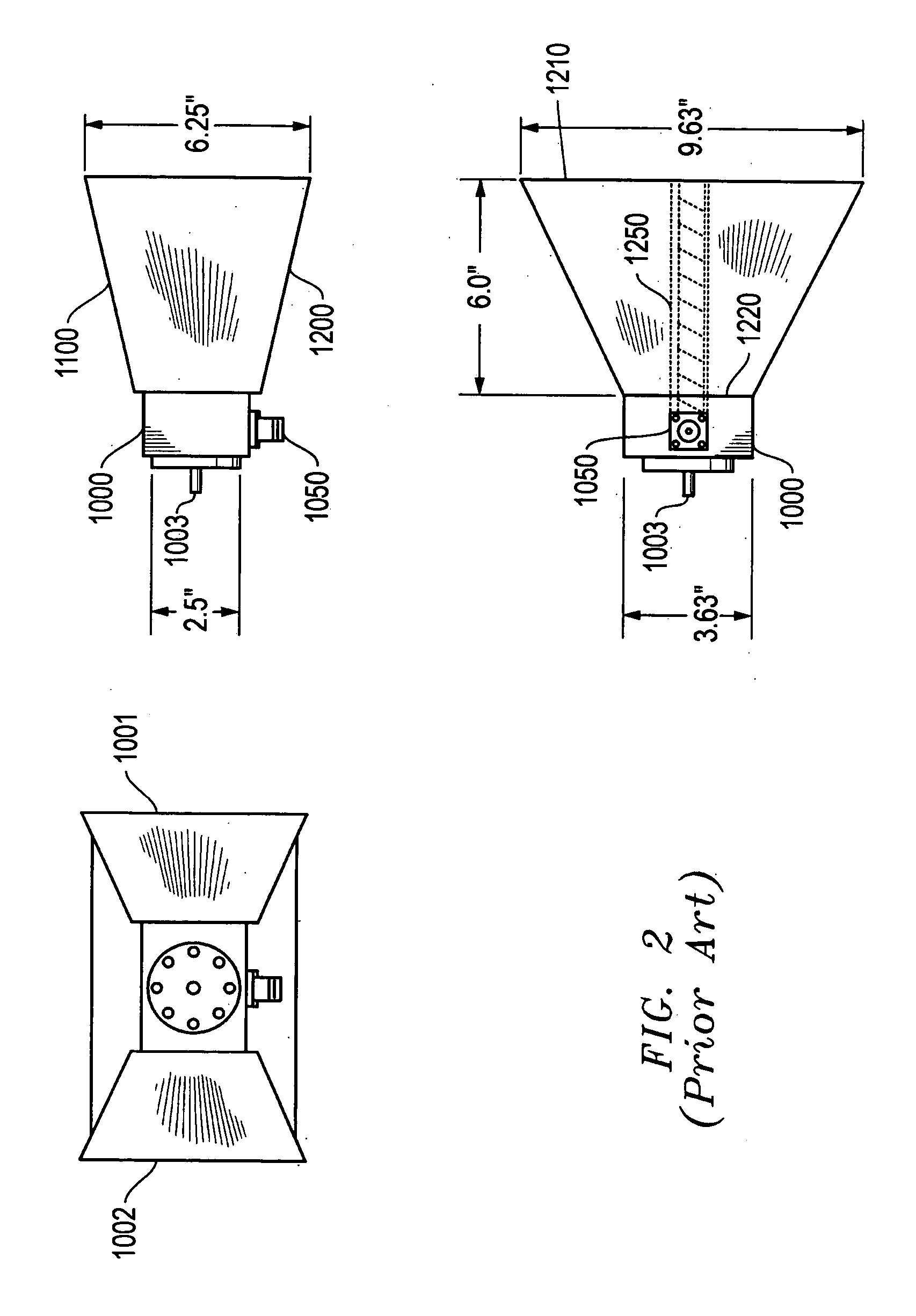Dual ridge horn antenna
a ridge horn and antenna technology, applied in the field of rf antennas, can solve the problems of difficult improvement of the directivity of the antenna without an increase in the vswr within the frequency range of operation, and the narrow beam of the 3115 antenna is not well suited for this purpose, so as to achieve the effect of small antenna length and small dimension
- Summary
- Abstract
- Description
- Claims
- Application Information
AI Technical Summary
Benefits of technology
Problems solved by technology
Method used
Image
Examples
Embodiment Construction
A 3-dimensional view of a preferred embodiment of a ridged horn antenna 5000 of the present invention is shown in FIG. 10. An aperture view is shown in FIG. 11. The embodiment comprises an upper plate 5100 and a lower plate 5200 that are affixed to a cavity assembly 5001. Cavity assembly 5001 is preferably rectangular in cross-section and is open at one end. Affixed to upper plate 5100 is an upper ridge 5150 and affixed to lower plate 5200 is a lower ridge 5250.
A side view of the preferred embodiment of antenna 5000 is shown in FIG. 12, comprising upper plate 5100, lower plate 5200, upper ridge 5150, lower ridge 5250, and cavity assembly 5001. The angle between upper and lower plates 5150 and 5250 is nominally 41.97 degrees in the preferred embodiment as shown in FIG. 12. In a side 6010 of cavity assembly 5001 is a fitting 6020, such as a precision type N jack, to receive a coaxial cable (not shown) to deliver RF power to antenna 5000. The center conductor 6030 of the coaxial feed ...
PUM
 Login to View More
Login to View More Abstract
Description
Claims
Application Information
 Login to View More
Login to View More - R&D
- Intellectual Property
- Life Sciences
- Materials
- Tech Scout
- Unparalleled Data Quality
- Higher Quality Content
- 60% Fewer Hallucinations
Browse by: Latest US Patents, China's latest patents, Technical Efficacy Thesaurus, Application Domain, Technology Topic, Popular Technical Reports.
© 2025 PatSnap. All rights reserved.Legal|Privacy policy|Modern Slavery Act Transparency Statement|Sitemap|About US| Contact US: help@patsnap.com



